The Evolving Story of Life


International Centre for Life

Welcome to Life
The International Centre for Life (Life) is a jewel in the North East’s crown. It has become part of the fabric of the city, attracting around half a million people annually to the services and activities offered on site. It is an imaginative and eclectic mix: from clinics to an award-winning science centre, and from cutting-edge medical research to a vibrant programme of events in its outdoor space, Times Square.
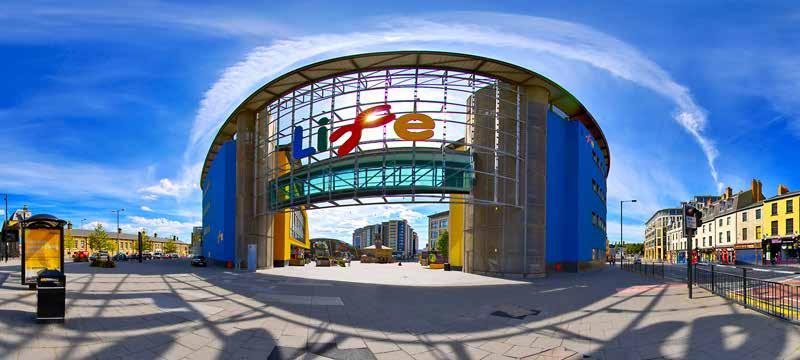
Life brings together scientists, clinicians, technologists and educationalists – all of whom are united by a passion for science and for improving people’s lives through groundbreaking research in health and wellbeing. Newcastle University and the Newcastle upon Tyne NHS Foundation Trust have achieved some notable firsts during their time on site – you can read about them more fully in this review. We are particularly proud that Life became the world’s first science centre to host a Covid-19 large vaccination centre during the pandemic.
The people of Newcastle and the North East are proud to have such an innovative development in their region, and I am proud to be its Chair, following magnificent contributions by my predecessors. I would like in particular to thank Matt Ridley, Life’s inaugural Chair and Alastair Balls, whose drive and determination made the project a reality.
The past decades have been exciting and eventful, and I have no doubt that the next chapter in the Life story will be equally fascinating. I am really looking forward to seeing how it all unfolds.
I have been lucky enough to have been involved with Life throughout its history. For over a decade, I have been its Chief Executive and I was part of the small team, together with Alastair Balls, Matt Ridley and John Burn, that raised £75 million from multiple sources to steer the project to reality. It was unique when originally conceived in the late 1990s and remains unique today, after two decades of operation.
At the heart of Life’s mission is a desire to enrich lives through science so that people can discover its relevance to their own lives and young people can find a route to a better future through STEM. Our trademark is hands-on interaction. We know that everyone, and particularly young people, learn best by doing and retain more of what they have learnt if the activities also engage them intellectually and emotionally. It’s a winning combination.
We work with many partners to achieve this, from the worlds of academia, business, community and culture. Our aim is to nurture interest in STEM, to raise aspirations and to develop the skills and personal attributes of young people, helping them to navigate STEM career opportunities – and, most importantly, have great fun while doing so! It’s truly wonderful to see a look of delighted surprise – that Eureka moment – on the face of children exploring science for themselves.
In the 21st Century, we live in a world that is shaped increasingly by developments in science and technology and the pace of change is accelerating, often leaving people bewildered and sometimes afraid. I believe passionately that there is a real need to engage more actively and effectively with people, to explore science in a non-threatening environment and to encourage debate on a whole host of critical subjects that are affecting the lives of us all. Climate change, of course, springs immediately to mind, but the list is a long and growing one, spanning everything from digital technologies to artificial intelligence and from pandemics to genetic engineering.
It’s been an exciting journey so far. I believe it will be even more exciting and challenging in the years ahead.
Life’s Chief Executive, Linda Conlon

Life’s Chair, Fiona Cruickshank

2 3
Towards the late 1900s, the land was left mostly abandoned and derelict and was ripe for redevelopment. Plans for Life were drawn up in the late 1990s by a team of people led by Alastair Balls from the Tyne and Wear Development Corporation, and also involving Life’s current Chief Executive, Linda Conlon, leading geneticist Professor Sir John Burn and The Right Honourable Viscount Ridley.
The celebrated North East architect Sir Terry Farrell was commissioned to create a design for the science hub that was as unique as its concept. What he designed put science at the very heart of the architectural design: an aerial view reveals the outline of the site is shaped to represent a growing foetus, while the green roof of Life Science Centre represents a curled leaf.
The History of the Site
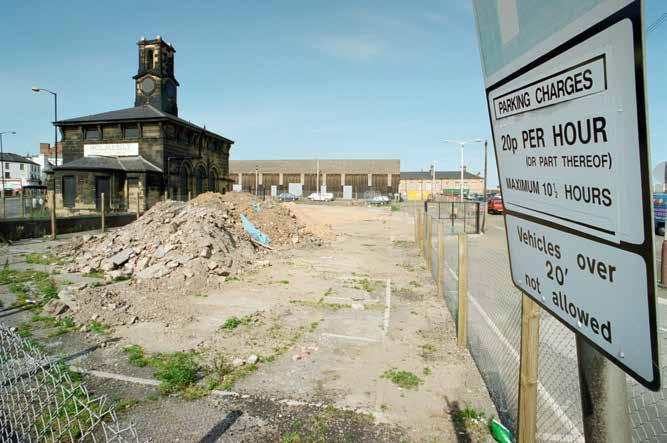
The land on which Life is built has seen radical transformation in recent history.
Until the start of the 20th Century, it was the site of the old Newcastle Infirmary, founded in 1753 following calls for a hospital for the poor and needy. But the development of the nearby railway station made the area popular for livestock markets, leading to the hospital being replaced by the Royal Victoria Infirmary in 1906 and the site becoming the city’s cattle market.
The International Centre for Life provides huge amounts of pleasure, education and inspiration, especially for young people.
Bill
Bryson, author and former Chancellor of Durham University
Life is a jewel in the region’s crown – a place that fosters creativity, increases scientific literacy and inspires future scientists.
Professor Peter Higgs, Nobel Prize-winning particle physicist and Emeritus Professor at the University of Edinburgh
It’s a landmark for the North East and something a lot of people are rightly proud of. When I first came up to Newcastle, it had only recently been built, and it felt like the future was going on there. They were discovering things that would unlock the potential of humanity.
Dominic Lusardi, co-founder of Teesside immersive digital experience company Animmersion, who worked with Life on the Space Zone
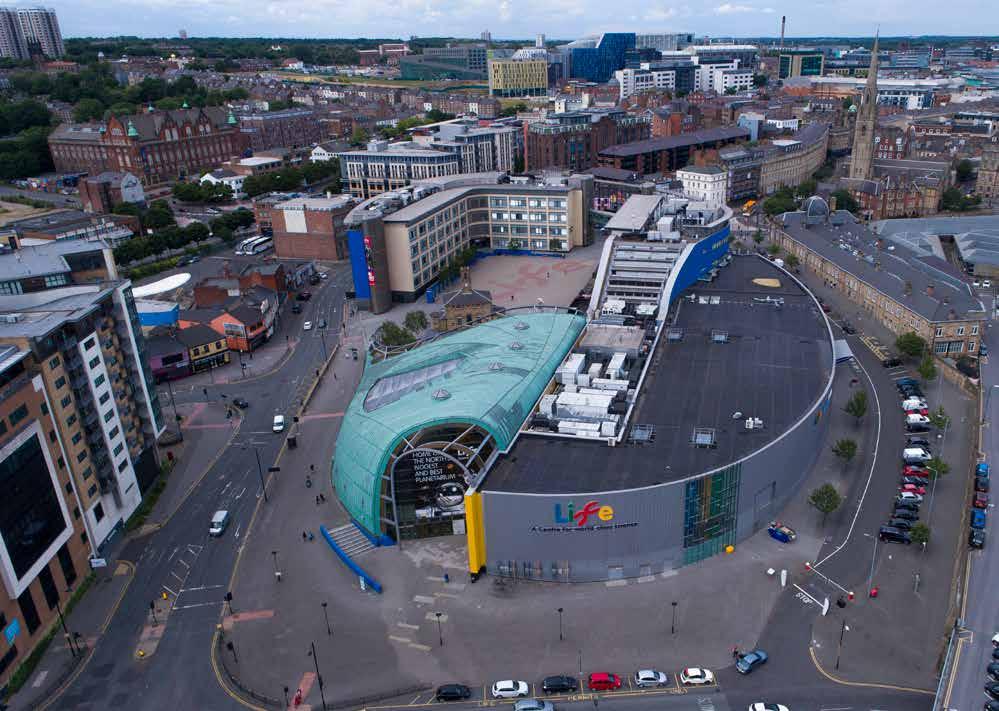
4 5
Top left: Life site including Market Keeper’s House, 1996.
Bottom right: Aerial view of Life, March 2021.
A Unique Concept
Life emerged from a desire to bring something truly transformational to the North East, and a strong feeling that the region was underplaying its strengths. The project harnessed the collective strengths of the city’s universities and focused on genetic science, a subject that was arousing increasing interest and raising ethical concerns amongst the general public. The result is a vibrant science hub in the heart of Newcastle that has become an essential part of the fabric of the city, adding significantly to its economic prospects and attracting international acclaim for groundbreaking research.
Life has made a positive impact on the lives of thousands of people, in many ways: families enjoying a day out in the award-winning science centre; children visiting as part of a school group, or people enjoying the nightclubs and the seasonal ice rink. Some may have attended a conference here or know someone who has received fertility treatment or help with a genetically inherited condition at one of the on-site clinics. From January 2021 to December 2022, thousands received a potentially lifesaving Covid-19 vaccine at Life, which was the first science centre in the world to be used as a Covid-19 large vaccination centre.
It’s a big part of the North East ecosystem. You come into Newcastle on the train from the south and it’s right there in view. I’ve no doubt that it has got people in the city thinking about science who have never thought about it before. But you also have to consider all the other activities that go on there, from the ice rink to events. For example, my son knows Life because it has a nightclub there.
Professor Chris Day, Vice-Chancellor of Newcastle University
Life has created hundreds of jobs in Newcastle and inspires local people – many living in some of the country’s most socio-economically disadvantaged areas – to pursue careers in science and technology. It has also stimulated the development of new buildings on adjacent sites, turning a run-down area of the city into a vibrant area.
The success of Life’s concept has inspired further investments in science in the city, such as Newcastle Helix. On a national level, Life played a key part in the development of the Genetics Knowledge Parks programme; Life was seen as a model system by the then Secretary of State for Health, Alan Milburn, and formed the basis for the discussions leading to the establishment of the £15 million fund to develop Genetics Knowledge Parks in Newcastle, the North West, Oxford, Cambridge and London.
Despite inspiring other science developments, Life’s mix of business, research, clinical treatment, public engagement and education remains unique around the world.

It’s so important that science is normalised, visible and accessible. Having the sort of space in the city that the International Centre for Life provides means that science is not something that’s hidden. Kids from all backgrounds can see that it’s something they can be part of.

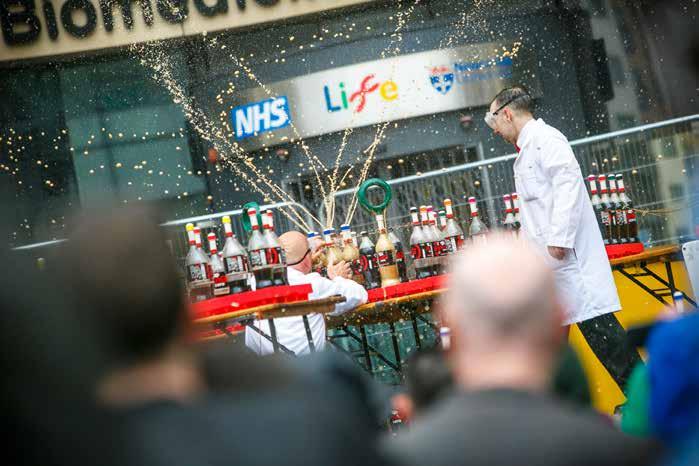 Chi Onwurah, MP for Newcastle Central and Shadow Minister for Science, Research and Innovation
Chi Onwurah, MP for Newcastle Central and Shadow Minister for Science, Research and Innovation
6 7
Bottom right: Eepy Bird, Maker Faire UK, 2015.
Enriching Lives with Pioneering Research
More than 200 scientists and postgraduate students from Newcastle University conduct cutting-edge biomedical research at Life.


Case Study: Life-saving Treatment for Lynch Syndrome
When Life opened, many people were nervous about genetics research and the concept of IVF babies. Life is proud to have been a pioneer in both fields. Partnership is key to the work we do. For example, male infertility genetics, my specialism, has involved working with fertility experts from Newcastle University and international collaborators but also closer to home, with the NHS Fertility Clinic on site. It’s inspiring and rewarding to be part of a unique circle of science in a place where researchers, clinicians, science communicators and educators work side-by-side, sharing expertise and ideas. We are all driven by a common goal to enrich lives through scienceand to make it accessible and relevant to everyone.
Research Highlights at Life
August 2003
Human embryonic stem cells capable of reproducing themselves under laboratory conditions produced for the first time in the UK.
August 2004
Scientists granted permission from HFEA, the Government’s regulator for fertility clinics, to carry out pioneering research to create stem cells from unfertilised human eggs for medical applications.
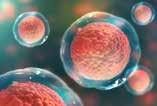

May 2005
First group in the world to successfully clone a human embryo.
July 2009
Human sperm created from embryonic stem cells.

From an early age, Michael Lightfoot was aware there was a problem in his family. “It wasn’t until the early 1990s that I went for some tests, and I was told it was a genetic spelling mistake,” says Michael.
The “genetic spelling mistake” is Lynch syndrome, a condition that increases the risk of certain types of cancer. The syndrome is passed on through generations and has already had a devastating effect on Michael’s family, losing his mother and seven aunties and uncles to bowel cancer.
Michael signed up for the Cancer Prevention Programme (CaPP) clinical trials led by Professor Sir John Burn to explore whether taking aspirin or resistant starch could reduce his risk of bowel cancer.

In a paper published in 2020, a 10-year follow-up to the clinical trial found taking two aspirins per day reduced the rate of bowel cancer by about half in patients with Lynch syndrome, and this protective effect is now known to last for at least 10 years.
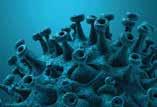
“Myself, my cousins and my sister all go for biannual colonoscopies now. We have regular checks and have our blood pressure checked and let them know if there are any side effects. We’re all still around, probably because of the centre, and John and his team,” says Michael.
December 2009
Stem cell research leads to a new treatment that reverses blindness caused by limbal stem cell deficiency in a patient in Newcastle. This treatment has now restored the eyesight of more than 30 people.
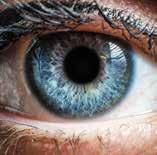
April 2010
Researchers announce a new treatment to give women with mitochondrial diseases the hope to have children without passing on the debilitating disease.
June 2020
Cells on the mucus-rich surface of the human eye were identified as providing an additional entry point for Covid-19 into the respiratory tract.
9 8
Professor Joris Veltman, Dean of Biosciences Institute, Newcastle University and Life Trustee
Enriching Lives through Clinical Treatment

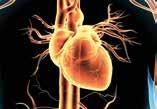
Life is home to the NHS Northern Genetics Service and the NHS Newcastle Fertility Centre, as well as a temporary Covid-19 large vaccination centre in 2021-2022.
Case Study: IVF and The Perry Family
Robert and Jessie-May Perry were first referred to the NHS Newcastle Fertility Centre at Life in May 2012, after a year of trying for a baby without success. They began IVF the following January.
The Northern Genetics Service, part of Newcastle Hospitals, is a great example of the outstanding role that Life plays in hosting both research and healthcare. We have the satisfaction of discovering exciting new ways to understand and treat genetic conditions - and seeing the real difference we make to patients. Working as part of the North East and Yorkshire Genomic Medicine Service, we make sure the latest developments in genomics benefit people across our regions. Clinicians, laboratory staff, reasearchers and our patients are working together to investigate improvements in how we diagnose many conditions including bowel cancer, harnessing RNA sequencing to help diagnose diseases when existing lab tests do not give us an explanation and exploring how to detect and treat cancers at an earlier stage. Genomics offers an opportunity to find out so much more about how to care for our bodies - and provides much optimism for better treatments and outcomes for our patients in the future.
Dr. Michael Wright, Consultant Clinical Geneticist and Deputy Medical Director, Newcastle
Landmark Moments at Life
July 2009
World’s first egg-sharing scheme produces successful pregnancies.
March 2017
Scientists based at Life granted permission from HFEA, the Government’s regulator for fertility clinics, to carry out pioneering research to create stem cells from unfertilised human eggs for medical applications.

January 2021
Life became the first science centre in the world to be used as a Covid-19 large vaccination centre.
“The first round felt really exciting, because you were doing something proactive,” Jessie-May said. From there, the process was an emotional rollercoaster and their daughter, Flora, was born after the fourth round of IVF.
There was a further happy twist in the tale for the couple. They’d frozen their final two embryos, and after a couple of years they decided to try again, and along came twins Kit and Mabel.
The couple is proud of how their family came about. Jessie-May has a folder of every single letter sent to and from the fertility centre, bound up in a neat folder. “Flora and I have looked through it, sitting at the kitchen table,” Jessie-May said. “We’ve talked about it a lot, and we feel it’s important to talk about it. We’ve told everyone that she’s an IVF baby and that science made her.”
Newcastle Fertility Centre has been part of the Life story since 1998 - two years before the site was officially opened by Queen Elizabeth II in 2000. We’re now regarded as a world-leading fertility clinic, dedicated to research, innovation and supporting our patients and we’re proud to be part of the on-going Life story. We’ve helped thousands of people every year, as part of their fertility journey. Fertility treatment often takes place in out-of-the- way places so being part of this vibrant community, in the heart of the city, is a hugely positive thing for our patients and our team. It’s a daily reminder of the wonders of science and the power of partnerships.
2022 - 2023
Funding was secured for a new research unit for organ donation and transplantation that will be hosted in Newcastle for the next five years. This unit will include a new laboratory at Life, which will explore treatments for donated organs before they’re transplanted.
The John Walton Muscular Dystrophy Research Centre at Life has secured funding which will help them improve the diagnosis and treatment of patients with rare muscular disorders, such as Duchenne muscular dystrophy and Pompe disease.
Prostate Cancer Research and Prostate Cancer UK are providing funding to a Newcastle University team to develop revolutionary new treatments for prostate cancer. The team is looking to explore new ways to stop the spread of the disease, which is the most common cancer among men.



11 10
upon Tyne Hospital
Dr Matthew Prior, Consultant Gynaecologist in Reproductive Medicine, Newcastle Fertility Centre
Enriching Lives through Public Engagement with Science
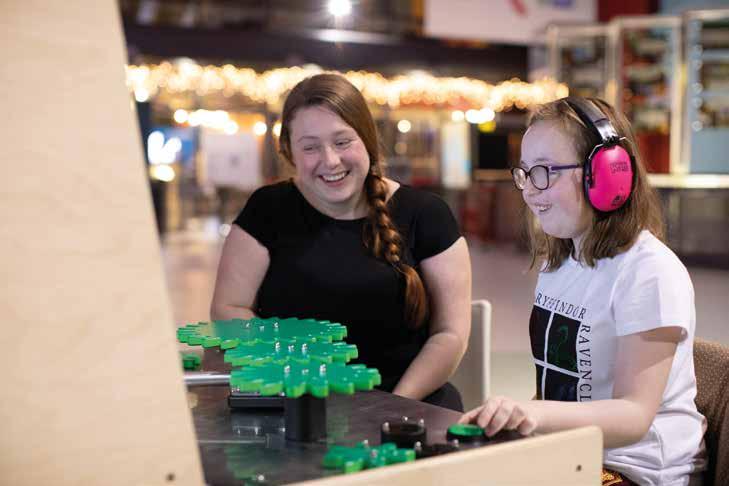
Life’s mantra is ‘science for all’. Its purpose is to inspire everyone in North East England to explore and enjoy science, and to discover its relevance to their own lives. At the heart of this mission is its educational visitor attraction, Life Science Centre –the only science centre in the region. It has brought incredible science exhibitions from all over the world to inspire the people of North East England. The core audiences for the science centre are families and school groups, but Life also runs special events for adults, including an innovative debate series, Science Speakeasy (see page X).
Life is highly regarded by local schools as a valuable educational asset, offering a unique and engaging programme of workshops and story-telling sessions that have been designed to reflect current and relevant STEM themes and topics which are linked to the national curriculum. Workshops take place in fully equipped real labs and The Making Studios, where students can expect exciting experiences that cannot be replicated in the classroom. Most school groups combine their workshop with a science centre visit to create a memorable, impactful learning experience. The setting of the science centre –within a working science village, with hundreds of scientists and clinicians making a real difference to people’s lives – also provides access to inspirational role models for the next generation of STEM professionals.
Life has earned an international reputation for its innovative work in creating an accessible and inclusive environment for all visitors and for building relationships with local groups who, for a variety of reasons, may not consider a science centre a place for them.
Life’s longstanding partnership with the North East Autism Society (NEAS) which began in 2018, has had a huge impact and is cited as an example of best practice amongst visitor attractions and other science centres. Young people helped to shape the centre layout and the design of new exhibits. They helped in the planning and delivery of Relaxed Sunday Sessions (dedicated quiet time for autistic people) and helped create a range of materials including a ‘visual story’ – a downloadable photographic explanation of what to expect from a visit. In 2021, Life was presented with the Gold Award for Autism Acceptance.
In June 2022, Life received an international award in recognition of this innovative partnership. The Mariano Gago Award, presented at the Ecsite ceremony in Germany, is widely regarded as the Oscar of the professional science engagement world. (Ecsite is the European network of over 320 science centres and museums.) In March 2023, Life was awarded ‘gold’ in the Accessible and Inclusion category at the North East Tourism Awards and the following month, was awarded the Bronze Deaf-Friendly Standard.
This is a remarkable project that has touched our hearts as well as our heads. We were particularly impressed by the huge personal impact that the Life project has made for participants. It has strong stable foundations and a legacy going forward.
Life takes accessibility and inclusion very seriously. It was evident that this is part of the Life culture from top to bottom. Great store is put in learning directly from visitors and partnerships with other key organisations such as North East Autism Society, and in implementing such advice.
13
12 Bottom right: Relaxed Sundays.
Sharon Ament, Director of the Museum of London and Chair of the Ecsite Awards judging panel
Andrew Marchbank, category judge, NE Tourism Awards 2023
Life Science Centre Highlights
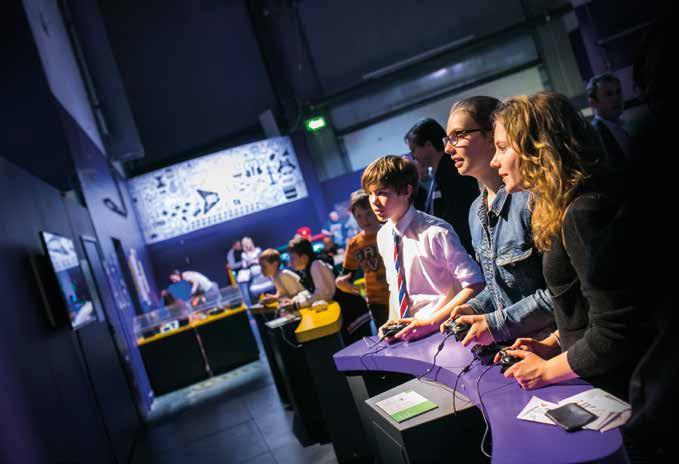
T-rex: The Killer Question (2006), Dino Jaws (2009 and 2017) and Age of the Dinosaurs (2013)
Animatronic dinosaur exhibitions are a firm favourite for Life visitors. Dino Jaws, created by the Natural History Museum in London, is one of many examples of making exhibitions created by national museums accessible to the people of North East England.
Maker Faire UK (2009-2018)

Life brought Maker Faire to the UK and hosted this flagship annual festival of all things making, crafting and tinkering for nearly a decade. Life is proud to have been a pioneer in the growing Maker movement in the UK and has since opened a permanent making space in the science centre.
Body Worlds Vital (2014)
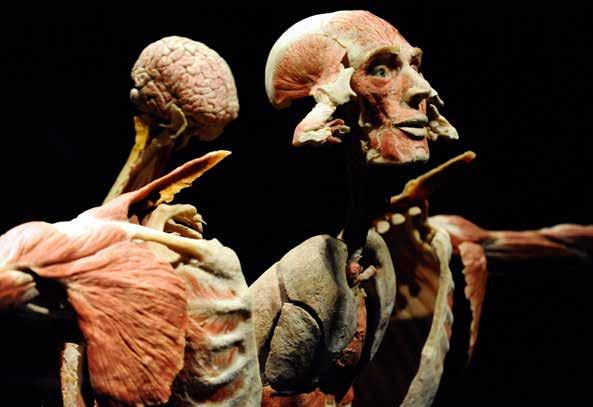
This international must-see exhibition by German anatomist Dr Gunther von Hagens was shown for the first time in the UK at Life – a real coup for Life and the city! The exhibition revealed the inner workings of the body with dead bodies that have been preserved by a plastination process. Following phenomenal visitor feedback, Life was thrilled to launch the follow-up exhibition Animals Inside Out in 2016.
Game On (2015 and 2019)
This exhibition explored the history, culture and future of gaming, including how virtual reality is creating ever-more immersive gaming experiences. Given the growth of the gaming industry in North East England, the exhibition was brought back for a second run, to help inspire the next generation of game developers.
14 15
Bottom left: Maker Faire UK, 2015.
2.0 launch, 2015
Top left: Body Worlds Vital, 2014 and Game On
Life Science Centre Highlights Cont...
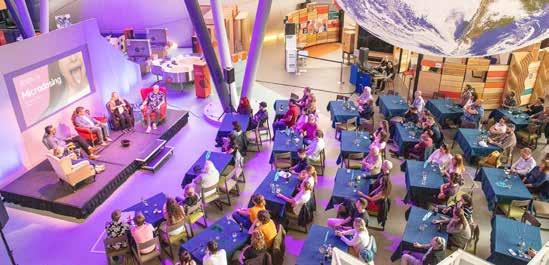
Museum of the Moon (2019)
This internationally-acclaimed art installation by Luke Jerram – a seven-metre-wide illuminated Moon that is suspended from the ceiling – was the setting for a programme of quirky adult events, including a yoga class by the Moon and a planetarium show with Pink Floyd’s Dark Side of the Moon album set to visuals on the dome.
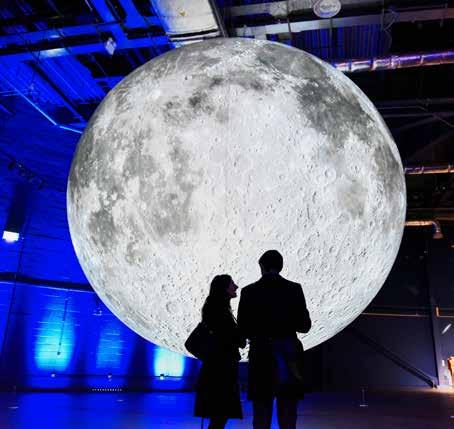
Gaia
Created by UK artist, Luke Jerram, Gaia uses detailed NASA imagery of the Earth’s surface to provide a unique opportunity to view our planet floating in three dimensions. Installed just before the international climate conference COP 26 (2021), it highlights the fragility and wonder of our planet and is one of only five permanent exhibits of the artwork in the world.
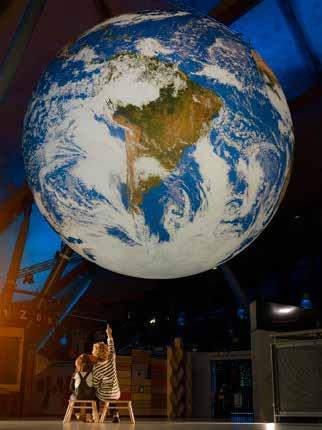
Seeing the Earth from space, it is obvious how everything is interconnected. That made me realise how important it is that society debates responsibly how to use science, and the need for a population which is science literate. Visitors to the Space Zone at Life Science Centre have a truly wonderful resource that will help to create a brighter future for everyone and enable us all to really enjoy being part of this vast and beautiful Universe.
Wow Zone
This permanent collection of hands-on exhibits opened in February 2023. As well as being fun and engaging, the exhibits explore how forces, chemistry and physics are used in everyday life. Highlights include using hydrogen and oxygen to blast a ping pong ball up to the height of a two-storey building and a 6-metre-tall ‘Big Machine’, complete with levers, pulleys and conveyor belts where visitors can work together to continuously move grain-like pellets around the exhibit.
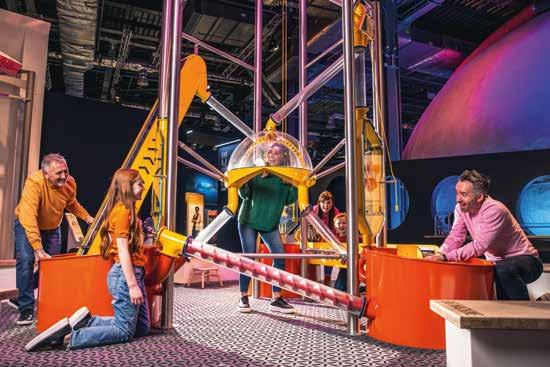
Science Speakeasys (ongoing)
Life’s Science Speakeasy events for adults, where important and often controversial topics are debated in a quirky and often irreverent way, continue to encourage debate and make headlines. Topics have included ‘Artificial Stupidity’ - what happens when AI goes wrong and who is to blame; and ‘Microdosing: marvellous medicine or fickle fad’, which explored the pros and cons of this growing trend.
16 17
Helen Sharman, astronaut and Britain’s first astronaut
Top: Wow Zone, 2023. Bottom: Science Speakeasy, April 2023
Top left: Museum of the Moon, 2019 and Gaia, 2021.
Other income streams adding to this colourful mix include a popular seasonal ice rink; a multi-storey car park; two cafés; and Times Square – an impressive outdoor space that is available for hire for special events, including music festivals, sports beer gardens and outdoor cinema screenings.
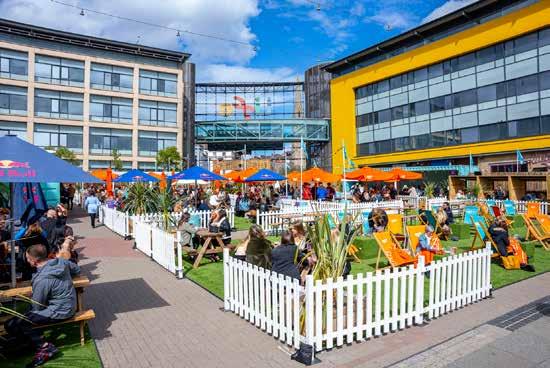

The Covid-19 pandemic had a profound impact on Life, as it did many organisations across the globe, but its strong business model meant it weathered the storm.
Innovative Business Model
Life’s business model is an exceptionally unusual and effective one. The diversity and breadth of its income sources ensures that it can generate all of its operating costs without public subsidy.
Newcastle University and the NHS pay rent for their spaces that is below market value because their work aligns with Life’s charitable mission. Their presence on site is also invaluable in terms of the gravitas that they bring to the science hub.
The on-site bars and nightclub not only bring life to the site in the evenings, but also welcome rental income.
Playing outdoors after dusk is always better. The crowd was fantastic and the panorama from my drum stool was quite spectacular, with the stage lights reflecting off the Life building. It was a pretty special atmosphere and we were all buzzing for quite a while afterwards.
Getting kids interested in science is invaluable and Life Science Centre is brilliant at it. From the enthusiastic staff to the wonderful exhibitions and workshops, it’s a great space to help show people how much fun science can be. I love getting the chance to help the teams there bring STEM subjects to life.

18 19
Steph McGovern, television presenter
Top right: Pop-up beer garden, Central Park, Times Square, July 2021. Bottom right: Maximo Park, Live from Times Square, August 2017.
Top left: Open air ice rink, Times Square, 2008.
Tom English, drummer, Maximo Park, who played Live from Times Square in 2016 and 2017
VIP Visitors
The highly unusual nature of Life and its many accomplishments has resulted in a number of high-profile visitors.
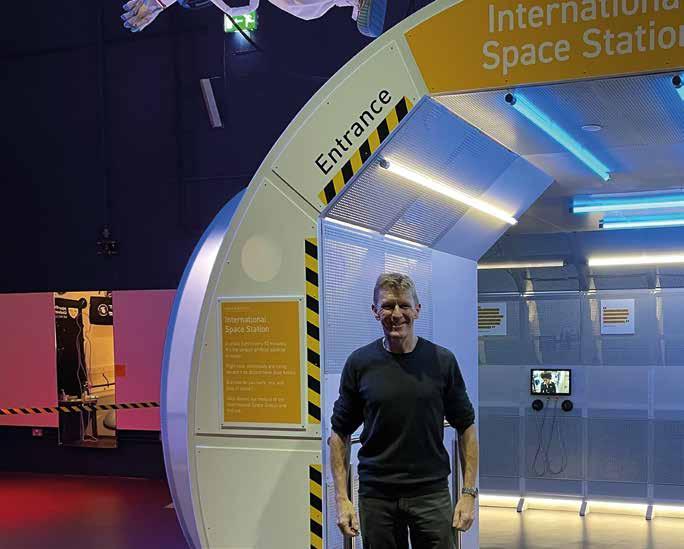
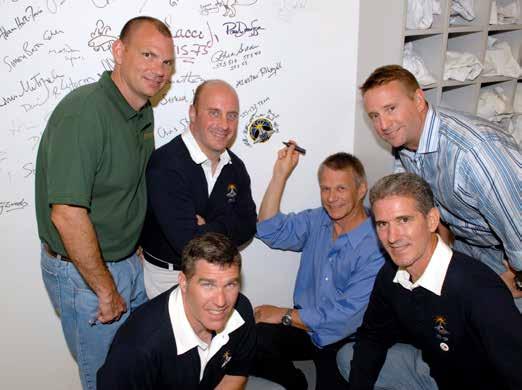
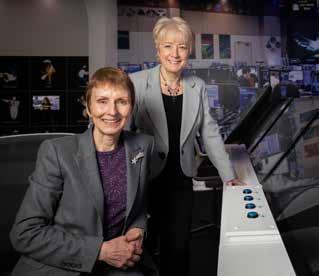
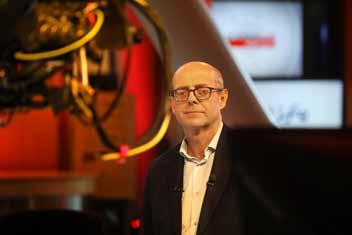

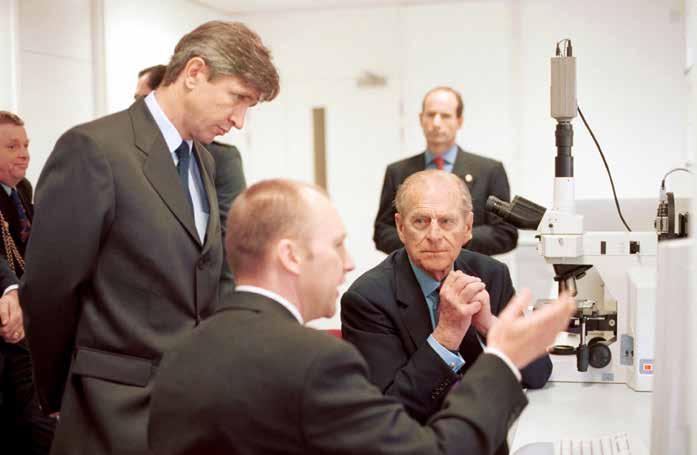

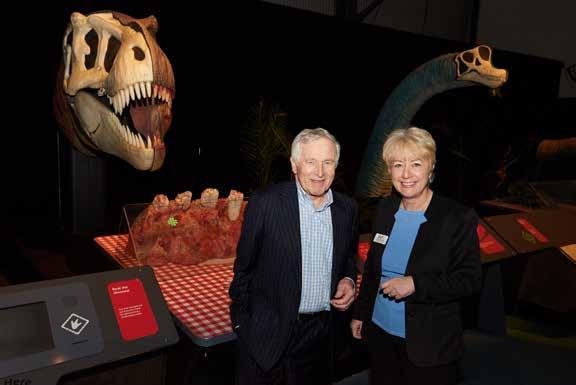

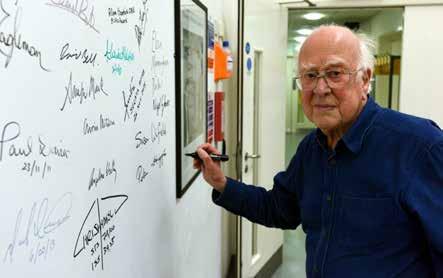

20
1 2
6. Professor Peter Higgs, Newcastle-born Nobel prize winner, 2016. 7. Bill Bryson, February 2004. 8. Jonathan Dimbleby and Linda Conlon, live broadcast of Radio 4’s Any Questions? February 2018. 9. Chris Hadfield, Canadian astronaut, November 2015. 10. NASA’s final shuttle crew of space Atlantis STS-132, 2010. 11. Rory Cellan-Jones, BBC Technology Correspondent, and David Jones, Community Liaison Manager, discussing accents and digital personal assistants, August 2018. 12. Tim Peake, British astronaut, visiting the replica of the I.S.S, Life Science Centre, October 2021.
3 4 5 6 8 10 7 9 12 11
1. (L – R) Alastair Balls, then Chief Executive, HRM Queen Elizabeth II, and Linda Conlon, then Director, officially opened Life Science Centre, May 2000. 2. HRH Prince Philip, Duke of Edinburgh visited Life in 2000. 3 & 4. Naga Munchetty and Nick Robinson, BBC presenters, BBC News Lockdown Live: What Next? March 2021. 5. Helen Sharman, Britain’s first astronaut officially launched Space Zone, January 2020.
research and vaccines – as well as in robotics and artificial intelligence, it has never been more critical to help the public explore and understand science and technology.
But we also live in a world in which the answer to our questions can often be found on a search engine; a world in which we can watch unusual and exciting experiments on our phones and learn from experts in the comfort of our homes.
The Covid-19 pandemic highlighted the importance of community and social interaction. There is a place for science centres to offer hands-on and social experiences that can be enjoyed with family and friends.
Our world is changing, with an ageing population and the imminent threat of the climate crisis. There’s concern about the next global pandemic and of antibiotic resistance. How will science research and clinical treatments help tackle these issues? And how can such fear-evoking topics be balanced with creating an enjoyable visitor experience?
These questions will shape the next chapter of Life’s story.
Thank You
Life would like to thank all of its partners and supporters for their help and support. In particular, Life is grateful for financial support from the following organisations:
• Biffa Award
• The Catherine Cookson Charitable Trust
• The Community Foundation
• Edina Trust
• English Partnerships (now Homes England)
• Erasmus+
• European Regional Development Fund
• Garfield Weston Foundation
• MacRobert Trust
• The Millennium Commission (now the National Lottery Community Fund)
• Northern Rock Foundation
• Northumbria University
• Ogden Trust
• One North East
• The Platten Trust
• Reece Foundation
• Sir James Knott Trust
• SITA Trust (now the SUEZ Communities Trust)
• Tyne and Wear Development Corporation
• UK Government’s Department for Business, Energy & Industrial Strategy, Department of Health and Social Care, and Department for Education
• UK Research and Innovation (UKRI)
• UK Space Agency
• Wellcome
• The Wellesley Trust
As always, a special thank you to Life’s on-site partners, Newcastle University and the NHS.

22 23
Life Science Centre International Centre for Life, Times Square, Newcastle upon Tyne NE1 4EP Telephone: 0191 243 8210 Email: info@life.org.uk Website: life.org.uk









 Chi Onwurah, MP for Newcastle Central and Shadow Minister for Science, Research and Innovation
Chi Onwurah, MP for Newcastle Central and Shadow Minister for Science, Research and Innovation




































